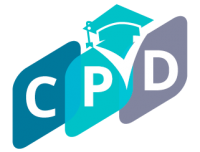Introduction:
Embarking on the journey of education is a remarkable and fulfilling experience, but the effectiveness of that journey depends significantly on the way we study. In the vast landscape of learning, understanding the science behind how our brains retain information is crucial for optimizing our study methods. As an SEO expert for an education consultancy company, let’s delve into the intricacies of cognitive processes and explore strategies that can enhance the efficiency of studying.
1. The Neurobiology of Learning:
To comprehend the science of studying, we must first explore the neurobiological aspects of learning. Our brains are complex networks of neurons communicating through synapses, forming intricate pathways that store information. When we learn something new, neural connections are established and reinforced through a process called synaptic plasticity. Understanding this process provides insights into why repetition and practice are essential components of effective studying.
2. Active Learning vs. Passive Learning:
The brain is more adept at retaining information when it is actively engaged in the learning process. Active learning involves participation, interaction, and problem-solving, as opposed to passive learning, where information is simply absorbed without much engagement. Techniques such as group discussions, practical applications, and teaching concepts to others stimulate various regions of the brain, leading to better retention and understanding.
3. The Power of Visualization:
Our brains have a remarkable ability to process and retain visual information. Incorporating visual aids such as diagrams, charts, and mind maps into study materials can significantly enhance learning. Visual stimuli activate different areas of the brain, making it easier for the information to be encoded and remembered. Tools like flashcards, infographics, and concept maps can turn complex topics into visually digestible chunks.
4. Spaced Repetition:
The spacing effect, or spaced repetition, is a cognitive phenomenon where information is better retained when learning sessions are spaced out over time. Instead of cramming, breaking study sessions into shorter, well-spaced intervals enhances long-term retention. Implementing this strategy helps strengthen neural connections, preventing the rapid decay of learned information.
5. Mnemonic Devices and Memory Techniques:
Our brains respond well to patterns and associations. Mnemonic devices, acronyms, and memory techniques leverage this aspect of cognition to make information more memorable. Creating associations between new information and familiar concepts enhances the encoding process. Techniques like the method of loci, chunking, and acrostics provide effective tools for improving memory retention.
6. Mindfulness and Focus:
The ability to concentrate and maintain focus is paramount for effective studying. Mindfulness practices, such as meditation and deep breathing exercises, can enhance attention spans and reduce stress, promoting a conducive environment for learning. Eliminating distractions and creating a dedicated study space also contribute to improved focus and information retention.
Conclusion:
Studying is not merely a routine task; it’s a cognitive endeavor that requires a nuanced understanding of how our brains process and retain information. By incorporating scientifically-backed strategies into our study routines, we can optimize the learning process and achieve better academic outcomes. From active learning methods and visualization techniques to spaced repetition and mindfulness practices, the science of studying offers a wealth of insights to those aspiring to maximize their educational journey. As we continue to explore and apply these principles, we unlock the potential for a more effective and enriching learning experience.
